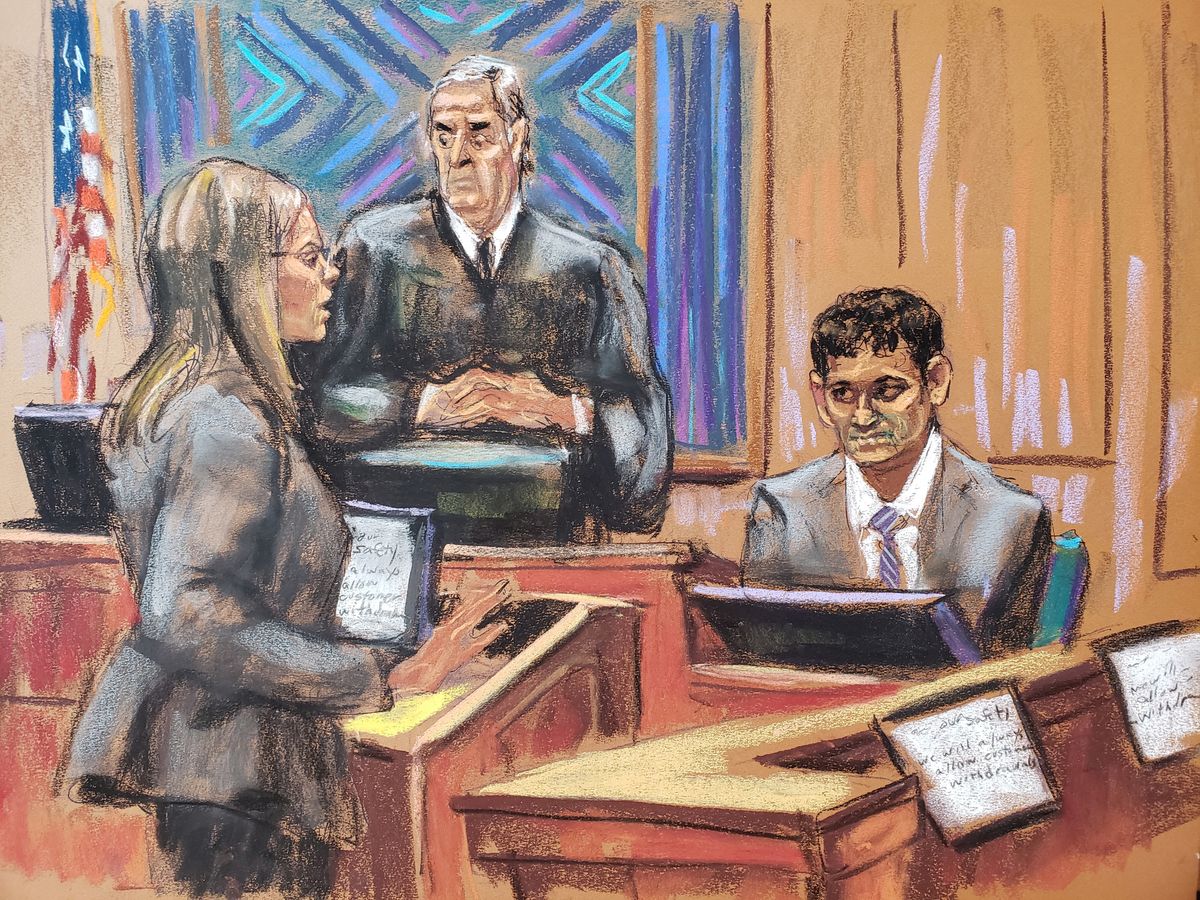FTX’s Sam Bankman-Fried takes the stand – here’s what you need to know about his testimony
FTX's Sam Bankman-Fried took the stand in New York last Friday and again on Monday for cross-examination.

A few minutes every morning is all you need.
Stay up to date on the world's Headlines and Human Stories. It's fun, it's factual, it's fluff-free.
The backstory: Last year, the cryptocurrency world was rocked by a major event. FTX, the second-largest crypto exchange at the time, went bankrupt. The focal point of the whole drama was Sam Bankman-Fried (SBF), the exchange’s former CEO and co-founder. He was accused of mishandling customer funds and being involved in questionable activities. Things got even more complicated when two of his top (former) executives pleaded guilty to their involvement in alleged fraud. SBF is now on trial for fraud and conspiracy and is facing a potential life sentence.
More recently: Earlier this month, Caroline Ellison, the ex-CEO of SBF’s hedge fund, Alameda Research, testified in the trial. In her testimony, she said that SBF instructed her and others to deceive FTX customers, secretly siphoning off their money. Ellison is one of the three close associates of Bankman-Fried who admitted to fraud charges and are now cooperating with the Manhattan US Attorney's office. Bankman-Fried's trial began on October 4.
The development: Bankman-Fried took the stand in New York last Friday and again on Monday for cross-examination. During his testimony, he denied any involvement in fraudulent activities, pinpointing mistakes as the leading cause behind FTX’s collapse. His most significant regret, he admitted, was not bringing in a chief risk officer.
Bankman-Fried also shared how he transitioned from working at the trading firm Jane Street Group to diving into the crypto world. He emphasized that he wasn't the tech genius behind FTX's code – that was his team's responsibility. The core of his testimony aimed to challenge allegations that he directed code changes allowing Alameda to borrow large sums without automatic liquidation. He also briefly touched on his on-and-off personal relationship with Ellison and their debates.
On Monday, Bankman-Fried went through an intense cross-examination led by Assistant US Attorney Danielle Sassoon. She grilled Bankman-Fried about inconsistencies in versions of his story he told in public. Bankman-Fried mostly answered with “I’m not sure” or “I don’t recall” when it came to these points, saying that he didn’t really remember a lot of the public statements or interviews he gave. But he did make some concessions, like admitting that Alameda had a US$65 billion line of credit with FTX, essentially allowing it to borrow unlimited funds. To put that into perspective, Bankman-Fried said the second-largest credit line that FTX had with another firm was US$150 million. He will continue his testimony on Tuesday.
Key comments:
"He was the one who set up these systems that allowed Alameda to take the money, and he was the one who directed us to take customer money to repay our loans," said Caroline Ellison earlier this month.
“I made a number of small mistakes and a number of large mistakes,” said Sam Bankman-Fried during his testimony. “By far, the biggest mistake was that we didn’t have a team dedicated to risk management.”
“We thought that we might be able to build the best product on the market,” said Bankman-Fried. “It turned out basically the opposite of that.”
“I disagreed with basically every article written about me” after FTX collapsed, Bankman-Fried said.
“From the early days of FTX, Alameda was allowed to exceed normal borrowing limits on FTX, yes or no?” Danielle Sassoon asked Bankman-Fried on the stand. “I’m not sure,” he replied.




Comments ()